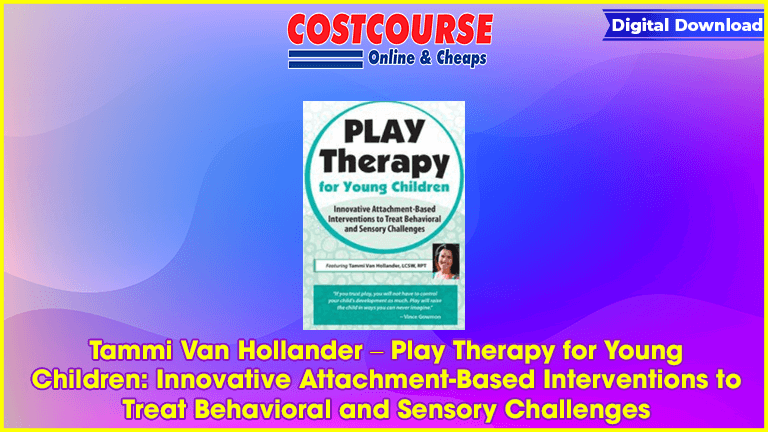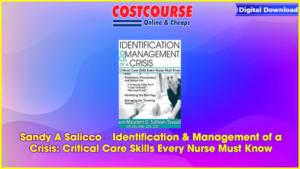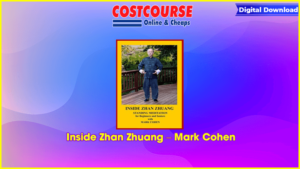Description
Brain development is the most rapid in the first three years of life, and play therapy is integral in promoting healthy child development and sustaining the parent/child attachment.
Tammi Van Hollander – Play Therapy for Young Children: Innovative Attachment-Based Interventions to Treat Behavioral and Sensory Challenges
This recording is filled with appropriate, fun, play-based interventions to rewire the brain and create a sense of trust and safety in the infant and young child’s world. Through play, children learn how to interact with the world around them, communicate and negotiate with others, discover emotions and empathy, ignite their imagination and creativity, boost resilience and self-esteem, and much, much more!
This recording will give you a clear understanding of attachment theory and child development, help you decipher the differences between developmental age and chronological age and most importantly, understand kids and the way they play.
Play therapy theories and techniques will include: Client-centered play therapy – Cognitive-behavioral play therapy – Developmental play therapy – Family play therapy – Theraplay®.
Through videos, case studies and hands-on directive play-based activities, you’ll increase your confidence to work with this young population and gain strategies for:
Sensory Processing Challenges
Aggressive Behaviors
Anxiety/OCD/Perfectionism
Trauma/Grief
Co-regulation
Sleep Issues
Enuresis
and more!
Children are sensory learners and play is a full sensory experience where children become engaged and make sense of the world around them.
Play will inspire and give you the tools to promote healthy development and attachment!
Handouts
Manual – Play Therapy for Young Children (85.02 MB) 27 Pages Available after Purchase Instructions for ASHA Credit – SELF STUDY ONLY – 02/20/19 (38.5 KB) Available after Purchase
Outline
Introduction: Ice breaker activity
Building Healthy Relationships: Attachment Theories
Video on neuroscience of attachment and the brain
Mary Ainsworth: 4 types of attachment styles
Bolby Attachment Theory
Video of Still Face experiment
Group activity
Infant & Child Development Theory
Maternal mental health
Freud, Erikson, Piaget and Mahler
Video: marshmallow test with children ages 3-5
Why Play?
Evidence supporting benefit of play
Therapeutic powers of play
Group activity
Play Therapy
Getting started
Therapeutic benefit
Limitations & potential risks
Assessment and treatment
What is the need behind the behavior?
What does the behavior tell us?
What are the skills behind the behavior?
Engaging Children in Play
Neurobiology of play
Repair of developmental trauma
Tools for self-regulation
What is needed for a play therapy room: the basics
From intake to termination
An ongoing process
Creative Play Therapy Interventions for:
Sensory
Aggression
Anxiety
Sensory Processing D/O
Enuresis
Trauma/Grief
Nightmare/Sleep Disorders
Hyperactivity
Divorce
Play Therapy and Techniques
Non-directive play
Client-centered play therapy
Sandtray
Art & music
Dolls and dollhouse
Case study and video
Developmental Play Therapy Ethical Issues of Therapeutic Touch
Intro to Dr. Courtney’s FirstPlay® Kinesthethic Storytelling Infant Massage®
FirstPlay® – Demonstration with baby dolls
Becky Baily: Baby doll groups and “I love you ritualsâ€
Developmentally-appropriate songs and games
Directive Techniques
Fun with Feathers
Puppet play
6 Senses Safe Place
Superpowers
Fun with Food
Bubble Tennis
Pooh/Inside-Out Feelings
Favorite books and interventions
Casey’s Greatness Wings
Greatness Sticks®
Sandtray Interventions
Mindful Freeze Dance
Wiggle out the sillies
Sandtray play therapy
Case Studies will be shared throughout the workshop when introducing interventions to participants, so you will get real life examples of the therapeutic value of my most beloved play therapy interventions I use with young children.
Group Activity: creative reflection exercise
Final Community Activity








